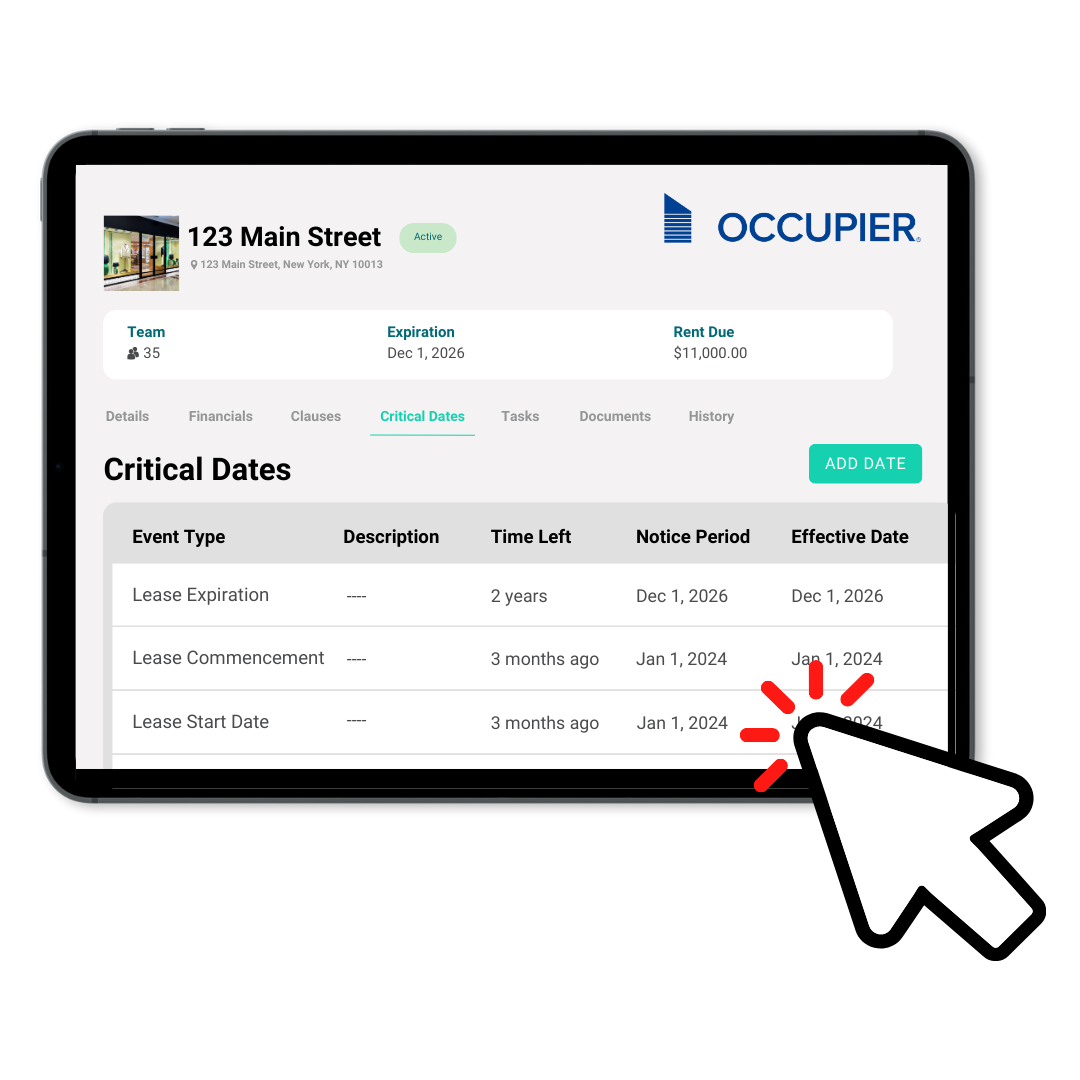What is a Letter of Intent in Commercial Real Estate?
Last Updated on May 2, 2024 by Morgan Beard
In commercial real estate, a letter of intent (LOI) is a document that outlines the preliminary terms and conditions of a potential transaction between a landlord and a tenant. It serves as a way for both parties to express their intent to enter into a lease agreement and lays the groundwork for further negotiations and due diligence. To note, this post will focus on letters of intent for a commercial real estate lease, but purchase and sales agreements run through a similar process.
Why is a Letter of Intent Important?
A commercial real estate letter of intent facilitates communication and understanding between landlords and tenants during the commercial transaction process. It provides a framework for discussions and negotiations, allowing both parties to clarify their expectations and identify any potential dealbreakers early on in the process.
By outlining the key terms and conditions upfront, a letter of intent helps prevent misunderstandings and reduces the likelihood of disputes arising during the lease negotiation stage. It serves as a roadmap for the lease agreement, guiding the parties towards a proposed real estate transaction and mutually beneficial outcome prior to executing the lease agreement, a legally binding contract.
Key Components of a Letter of Intent
While the specific content of a letter of intent can vary depending on the circumstances and preferences of the parties involved, there are several common components that are typically included:
- Introduction: The letter should start with a concise introduction that states the intent of the document and identifies the parties involved.
- Property Description: A brief description of the property being considered for lease should be provided, including its location and any unique features that may be relevant to the transaction.
- Term and Rent: Basic terms like the duration of the lease, including the start and end dates, as well as the proposed rent structure, should be clearly specified. This may include information on any rent escalations or rent-free periods.
- Space Configuration: Details regarding the size and layout of the leased space should be outlined, including any specific requirements or modifications desired by the tenant.
- Tenant Improvement Allowance: If the tenant intends to make improvements to the space, the letter of intent may address whether the landlord will provide a tenant improvement allowance and, if so, the amount or percentage to be allocated.
- Operating Expenses and Common Area Maintenance (CAM) Fees: The letter may include provisions related to the payment of operating expenses and common area maintenance fees, specifying whether these costs will be passed on to the tenant and in what manner.
- Lease Guarantees: If the tenant is a corporate entity, the letter may address whether the landlord requires personal or corporate guarantees to secure the lease.
- Early Termination and Renewal Options: The letter may include deal points or lease provisions related to early termination or renewal options, allowing both parties to plan for contingencies or future business needs.
- Conditions Precedent: Any conditions that need to be satisfied before the lease becomes binding, such as obtaining necessary permits or approvals, may be specified in the letter of intent.
- Confidentiality Provisions: If the parties wish to keep the negotiations and terms confidential, the letter may include a confidentiality clause to protect sensitive information.
The Role of a Letter of Intent in the Negotiation Process
Once the letter of intent is drafted with proposed terms and agreed upon by both parties, it serves as the basis for further negotiations and due diligence. It provides a starting point for the preparation of the final lease agreement, allowing the parties to focus on specific details and legal language.
During this phase, the tenant may conduct comprehensive due diligence on the commercial space, including inspections, assessments, land survey information and financial analysis, to ensure that the premises meet their requirements and expectations.
The letter of intent can also be used as a tool for engaging other professionals for legal advice, including attorneys, brokers, or consultants, to assist with the negotiation and drafting of the final lease agreement. These informal conversations are meant to assist your team in aligning on a mutual agreement between tenant and landlord.
The Non-Binding Nature of a Letter of Intent
It’s important to note that a comprehensive letter of intent is generally non-binding, meaning it does not create a legally enforceable agreement between the parties. However, there may be exceptions where certain provisions within the letter are deemed binding, such as confidentiality or exclusivity clauses.
The purpose of a non-binding letter of intent is to establish the framework for the lease negotiation process and incentivize good-faith negotiations. It allows the parties to explore various terms and conditions without being bound by legal obligations until a final lease agreement is executed.
Letter of Intent in Commercial Real Estate
A letter of intent in commercial real estate serves as a vital communication tool for landlords and tenants. It outlines the preliminary agreement includes terms and conditions of a potential lease allowing both parties to express their intent. By clarifying expectations, defining each parties’ interests and identifying dealbreakers early on, a letter of intent sets the stage for successful lease negotiations and ultimately contributes to a smoother transaction process.

Product Tour
Take a self-guided tour and see how the fastest-growing commercial tenants leverage Occupier for lease management & lease accounting.
